By Claire Bacon, ACN, CNC
Crickets, mealworms, and grasshoppers? Oh my! They’re coming for our food! If this comes as a shock to you, then you might want to start looking for your health information and news in more places. Better keep your eyes open, as changes are coming! That’s right, this surprising topic has been quietly simmering for years while researchers experiment on what versions of insect powder and emulsified pulp might be most appealing to consumers. (If they had asked me, I could have saved them a lot of trouble and told them NONE OF THAT would be appealing!)
Once upon a time, the mention of incidental bugs being found in processed food was a scandal. Then, as food companies realized the difficulty of keeping bugs out of our food, these “defects” became somewhat accepted and regulated. Pretty soon, the presence of bugs in our food may actually be a top selling point!
Don’t believe me? It’s called PPI: Packaged Processed Insects. And they are already on the market in many parts of the world. And they are targeting a wide range of consumers: gourmet foodies, people avoiding gluten and dairy, fitness enthusiasts, and the environmentally conscious, particularly millennials. You’re not going to believe this list of products – you’ve got to click here. Would you look at the names of some of these products?!? 😊
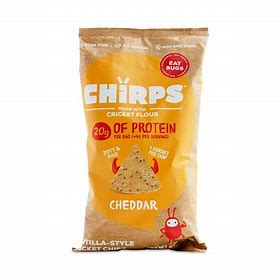
The Big Picture
As the world goes, you know everyone is looking to make a buck. And companies are looking to capitalize on three current health trends:
- Some people are looking to eat more protein,
- Even more people are looking to eat less meat,
- Everyone wants to save the planet.
With the current political climate, there is an endless narrative about cattle farming and how it drains resources, causes erosion, and produces way too much methane. In addition, it involves clearing too much native vegetation and increases pollution and risk of fires. Part of the problem is that livestock farms are exempt from certain regulations that would curtail their ability to let odors and pollutants escape their property limits.
That’s what they say. But do you think the solution is to abandon cattle farming altogether? Or do you think there’s a better way to do it? Our position is that there are TWO distinct ways of farming:
- One that is proven to be sustainable and good for the local ecosystems, and
- Another way that involves thousands of animals crammed into unsanitary conditions, eating in a way unsuited for their species requirements and for human health.
Just maybe, the solution should be to convert the unhealthy, soil-destroying farms into a more regenerative model. What would this involve? Money, time, and willingness… and a lot of it! Plus a lot of patience, innovation, and a motivation to create a future for humanity. Because we know we can’t continue as we have been. We need to find ways to balance corporate profits with welfare of the animals and beneficial nutrition for future generations.
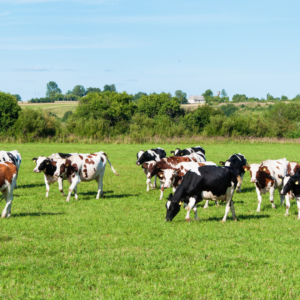
Benefits of Eating Insects
So, with this in mind, when you hear bad press about red meat, cattle, or farming in general, I want you to consider – is this propaganda? Or truth? When you hear this message, pause a moment and think, “Who paid for this message?” and “What do they stand to gain?” If you see commercial advertising, the marketing spin you can expect will involve these points:
- Non-meat is just as nutritious as meat,
- Alternative meat sources are more sustainable and less expensive,
- Insect farming is less harmful to the environment.
Maybe so. But, are you ready for that? How do you think you’re going to feel, as a consumer, being told that eating bugs is healthier for you than eating a steak? I’ll guess that initially you’ll feel somewhat confused, and not know what to believe. That’s why we’re going to take a closer look at what the research is revealing…
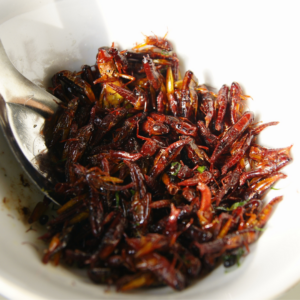
Insects for Dinner?
Thousands of insect species are considered to be edible, most of them from tropical countries. In these areas, the most commonly eaten insect groups are beetles, caterpillars, wasps, bees, ants, grasshoppers, locusts, crickets, cicadas, termites, dragonflies, and flies. However, mealworms and crickets are seen as the most suitable for consumption and processing. Cricket flour is the most common ingredient in insect-based formulations and is typically combined with other traditional flours like wheat.
I’ll let you make up your own mind if this sounds like a good idea!
Tenebrio molitor (The Yellow Mealworm)
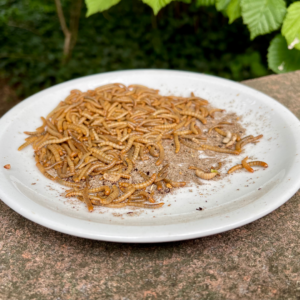
We definitely saw a lot of dried mealworms for sale in the markets in Thailand. Plenty of people were more adventurous than I was, as the mealworms seemed to be a popular item.
Apparently, the yellow mealworm contains a diverse mix of proteins and enzymes. However, some of these proteins may have adverse effects for previously sensitized people, especially people allergic to shrimp and other shellfish.
Locusta migratoria (The Migratory Locust – aka Grasshopper)
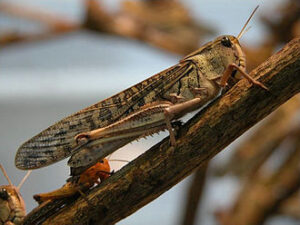
In Switzerland, the migratory locust is officially approved for the use in food. On July2, 2021, the European Food Safety Agency published an opinion stating that the consumption of migratory locust in frozen, dried or ground state is safe for humans. On November 12, 2021, the EU Commission designated the migratory locust as a food safe for market. In addition, the Singapore Food Agency (SFA) has approved 16 species, such as crickets, silkworms and grasshoppers, for human consumption in the second half of 2023.
novel-food_sum_ongoing-app_2018-0395.pdf (europa.eu)
Acheta domesticus (The House Cricket)

My first thought when I read this is Jiminy Cricket. You know – the tap dancing, singing, top hat-wearing companion to Gepetto and Pinochio. “When you get in trouble and you don’t know right from wrong, Give a little whistle!”
Well, reminiscing of Disney songs is sweet, but let’s get back to business. There really are a ton of new cricket products coming our way. And they are putting it in our pet food, too.
And guess what – if you have a shellfish allergy, it is likely to cross react with cricket acheta protein, causing a severe reaction. What’s also upsetting is that crickets (and other insects) concentrate the toxins from their food. If arsenic or other heavy metals are in their food, it is in them, too.
Acheta domesticus House Cricket – ScienceDirect
Gryllodes sigillatus (The Tropical House Cricket)
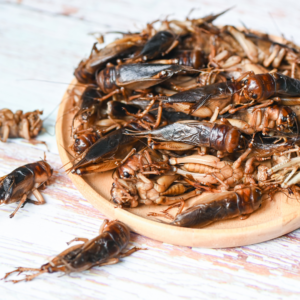
This just makes me think of Jiminy Cricket on vacation, wearing a grass skirt, sipping on a Pina Colada! But the reality is not that cute. If you’re up for it, here is an educational video all about raising crickets as food. I’m kind of speechless. Tell me what you think about this!
The Gryllodes Sigillatus in Food – A Novel Culinary Revolution (talk-commerce.com)
Microsoft Word – micali_catherine.docx (uga.edu)
Bottom line
If you’ve read this far, and you’re feeling a bit queasy, you may not be ready for jumping right in to eating insects. The manufacturers are betting you’ll feel this way. They know consumers will be resistant to eating bugs until the appearance, taste, and texture are appealing in all ways. That’s why we can expect manufacturers to grind and emulsify them into forms that can be hidden easily in our most popular foods.
If you’ve never learned to read labels and check the ingredients, now is the time!! You’ll want to look closely at sauces with multiple ingredients, protein bars, crackers, pasta, hummus and other dips, and other health-conscious conveniently packaged foods. Look for creative variations of the scientific names:
- Acheta powder
- Gryllus Bimaculatus
- Whole and ground lesser mealworm (Alphitobius diaperinus)
- Dried crickets (Gryllodes sigillatus)
- Whole, Ground, or Dried mealworms (Tenebrio molitor)
- Whole and ground Grasshoppers (Locusta migratoria)
- Whole and ground crickets (Acheta domesticus)
- Black Soldier Fly (Hermetia illucens)
- Common Housefly (Musca domestica)
The top manufacturers include:
- Chapul (protein bars)
- Bugeater Foods (protein shakes),
- Cricket Flours (smoothies and milkshakes),
- Six Foods (tortilla chips),
- LaViewEye (bars and baked goods),
- Exo (protein bars),
- ATB (plain cricket powder)
- Next Millennium Farms,
- Tiny Farms,
- Aspire,
- Cricket Flours (keep it simple), and
- Big Cricket Farms.
They are betting that consumers won’t question further if they see some kind of long, unfamiliar word in the ingredients.
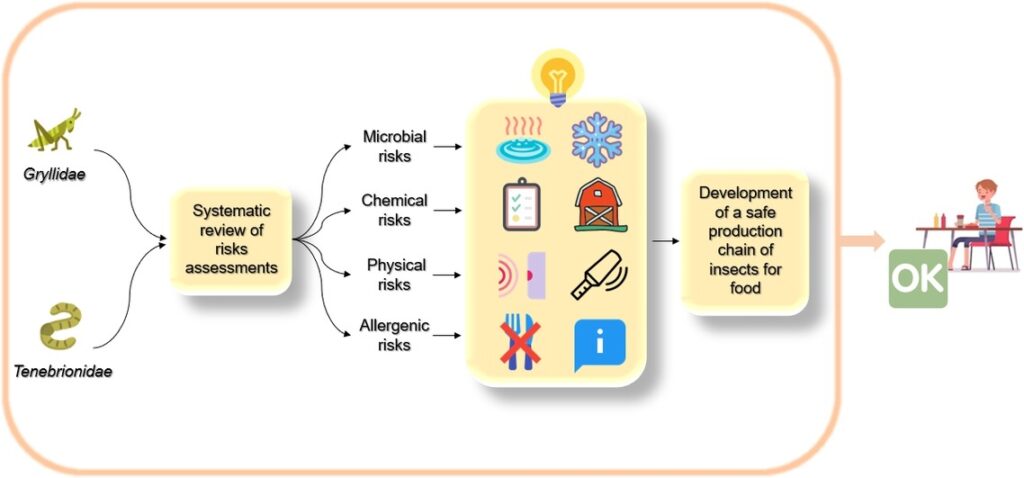
The US Congress is considering legislation similar to that in the EU for the use of bugs to replace meat in American stores.
So… read your labels. Keep your eyes open! And reply back to this message with a picture of any insect product you find in a store!


